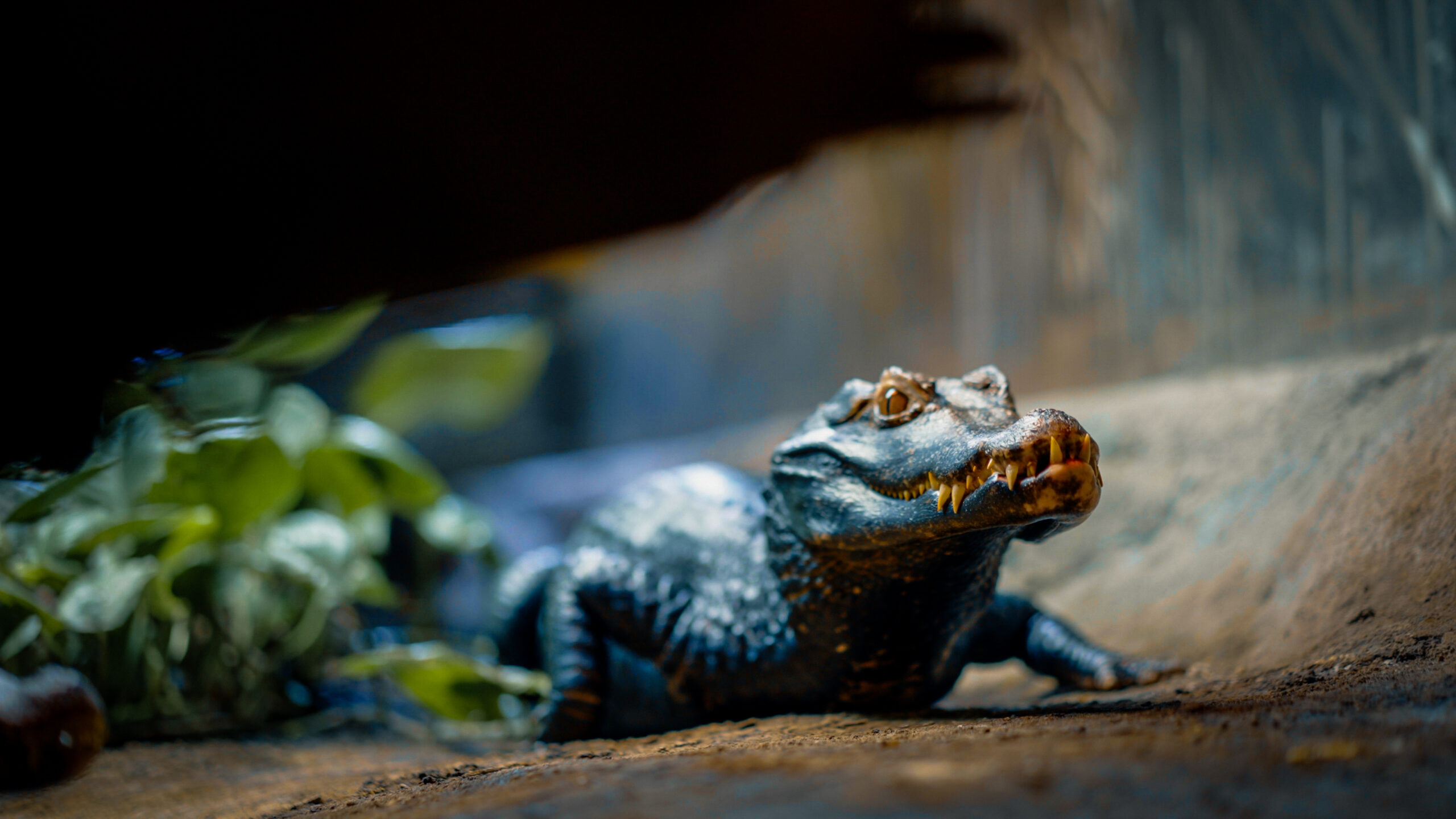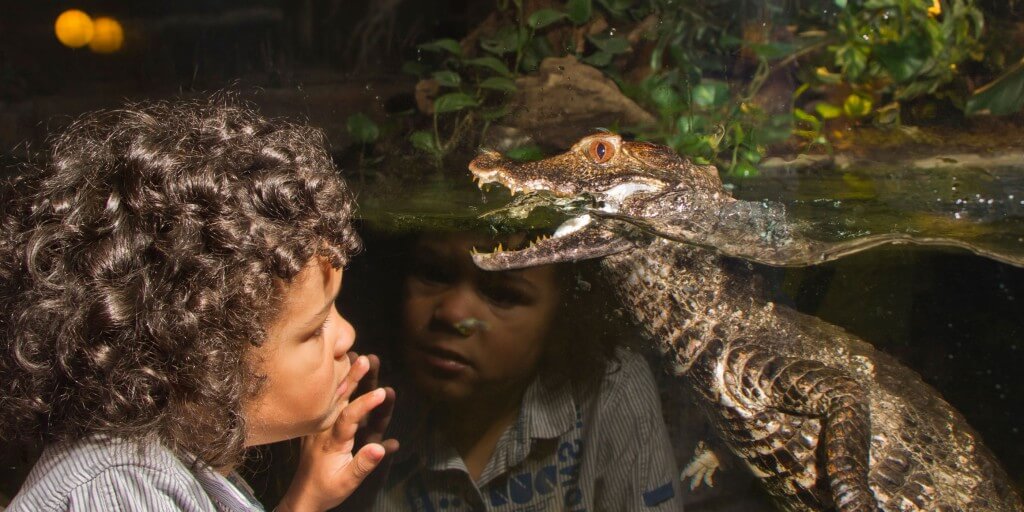Did you know?
There are three families that make up the Crocodila family, with around eight genera and 23 species. These 23 species are split across the three families, which are Crocodylidae (crocodiles), Gavialidae (gharials and false gharials), and Alligatoridae (alligators and caiman). At our Caiman exhibit, you have the chance to come face-to-face with our very own curious Caiman – the Cuvier’s Dwarf Caiman to be precise! So, let’s discover more about what this exhibit is all about, and what else you’ll find here.
What is it?
What is the Caiman Exhibit?
Blue Planet Aquarium is home to the Cuvier’s dwarf caiman (Paleosuchus palpebrosus), which is the world’s smallest living New World crocodilian. They are native to South America, typically found in rivers, streams and mangrove swamps. The Cuvier’s dwarf caiman can grow up to 1.6 metres in length, but they are still incredibly mighty creatures.
Our exhibit gives you the chance to see these fascinating animals up close so you can learn a little more about this species, as well as showcasing some of our other incredible creatures that call Blue Planet Aquarium home.
What's it like?
What is the exhibit like?
Our Caiman exhibit aims to mimic the diverse ecosystem of a flooded forest area. Cuvier’s Caiman show preference of fast flowing rocky streams and rivers, though can still be found in slow moving water.
With that in mind, you’ll find our Caiman exhibit to be a truly fascinating one, with plenty to see and learn about.
What will I find in this exhibit?

Cuvier's Dwarf Caiman
Cuvier’s dwarf caiman (Paleosuchus palpebrosus) is the smallest kind of alligatorid in the world!
To make up for their small size they have a strong defence to protect them from predation. Their thick scales form an armour like defence and are lined with boney plating underneath for extra protection!
Who's it for?
Who would enjoy this exhibit?
Anyone fascinated by the diverse range of aquatic creatures in our world would love the Caiman exhibit. This part of our aquarium showcases a great array of species, giving you the chance to get up close and see them in all their glory. From caimans to cichlids, our exhibit is home to some really interesting creatures, including some that you may not have heard of before!
Accessibility
At Blue Planet Aquarium we have done all we can to ensure the aquarium is as accessible as possible, but please get in touch if you have any queries or concerns.





